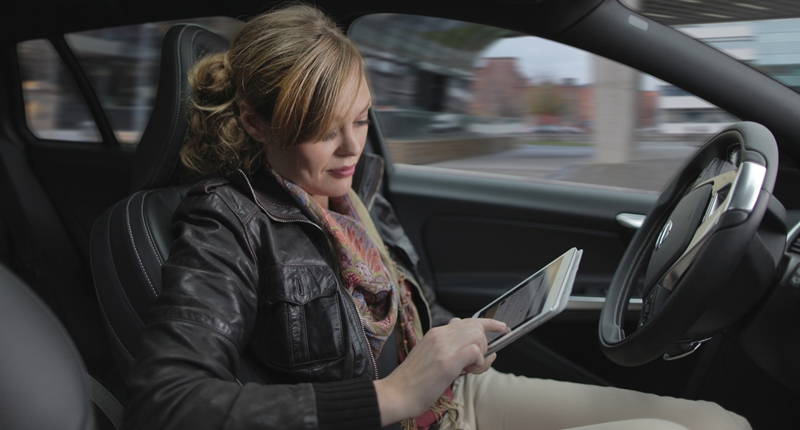LG’s 100-Inch QNED evo AI TV Redefines Big-Screen Viewing in South Africa In a bold leap forward for home entertainment, LG Electronics South Africa…
Self-driving cars: a case for and against the autonomous vehicle

Nearly one quarter of drivers are right now willing to stump up a sizeable chunk of change to have an autonomous driving mode in their next vehicle.
That’s according to the results of the recently released JD Power 2014 US Automotive Emerging Technologies Study. Yes, some 24 percent of motorists want to prod a button, surrender all control of their vehicle, and transform their otherwise mind-numbingly boring commute into a period of prolonged productivity. Or indeed a satisfying stretch of deep slumber.
Are you one of them? Or do you fall squarely into the I-don’t-quite-trust-machines-to-drive-me-around camp? Alternatively, are you part of the faction that actually enjoys being in control behind the wheel?
Regardless of your answer, you simply can’t deny that the realisation of the autonomous car — or the ideal manifestation thereof, anyway — would bring with it countless benefits. But, of course, the world rarely bothers itself with pesky ideals, so significant drawbacks are a major possibility. In a bid to help you form an opinion — or perhaps even change an existing one — we’ve put together a collection of pros and cons of the autonomous car.
Chief among the advantages is the effect that a well-oiled self-driving system would likely have on road safety. Blatant human error currently causes a staggering number of fatal crashes around the world, so removing prone-to-err humans from the equation would make a truckload of sense.
The argument is simple: people get tired and have relatively slow reaction times — computers don’t. Similarly, road rage would all but disappear, as all self-driving vehicles would be programmed to be predictable, courteous and unemotional. After all, a computer isn’t going to drive like an absolute lunatic because its wife has just filed for divorce…
Platooning — the grouping together of autonomous cars behind one lead vehicle in a train-like formation — is a key idea in making the self-driving car an everyday reality. This system would ensure a smoother traffic flow, which in turn would result in shorter travel times, better fuel efficiency and possibly even a higher freeway speed limit.
Self-driving cars also have the potential to provide increased mobility for those who aren’t able to — legally or otherwise — get behind the wheel. The elderly, handicapped and even young children would in theory be able to get around more easily, with less help from others. It’d be a case of summoning a self-driving car rather than pulling one out of the garage.
Another significant upshot of an extensive network of autonomous cars would be the effect on parking. No longer would you have to circle your inner-city destination like a crazed bird of prey, searching desperately for any signs of a vacant bay. No, self-driving cars could instead drop passengers virtually at the door, before independently scurrying off to the nearest satellite parking lot — which needn’t be all that near at all.
So, what about the cons? Well, first and foremost is the cost. New technology isn’t cheap, and only if and when the autonomous car goes into full-scale mass production would the price of the typical vehicle begin to fall (but even that would take a relative age – just think of how expensive electric vehicles and hybrids still are). Then, of course, there would be the enormous expense of creating a reliable network that would allow various self-driving vehicles to communicate effectively with each other.
And while improved safety may be a fundamental “driver†behind the autonomous car, a single fault – be it hardware related or simply a loss of network communication — could have a disastrous effect on a busy road. No system is foolproof and there’s always the possibility of an error creeping in and causing absolute chaos, or even worse.
And if something does go wrong and a vehicle crashes, who will be liable? The owner of the vehicle? The manufacturer? The network providers? An algorithm? There are currently all sorts of legal uncertainties. And what if hackers manage to locate and exploit a vulnerability in the system, effectively taking control of any vehicle they so desire? Similarly, what about privacy concerns regarding the collection of data?
The advent of the autonomous vehicle would also likely result in significant job losses in the transport industry. No longer would the services of truck drivers, bus drivers or taxi drivers be required, as goods and passengers would in effect deliver themselves.
But the biggest drawback of the completely autonomous vehicle, for car enthusiasts at least, would be the gloomy prospect of the “end of drivingâ€.
Will this actually become our reality? In our view, it’s unlikely to happen any time soon – far more plausible is the scenario of the driver remaining in control for at least part of the time, with the vehicle’s onboard computer taking over only in relatively low-risk situations (such as during platooning or in rush-hour traffic) or when safety is severely compromised.
In which case, everyone wins. Because nobody actually enjoys driving in heavy traffic, right?

